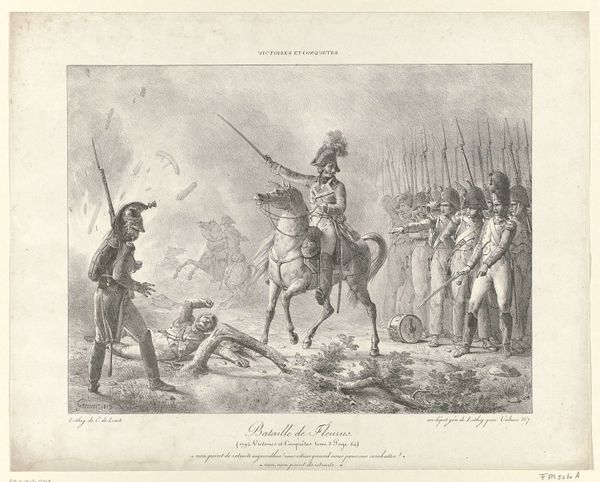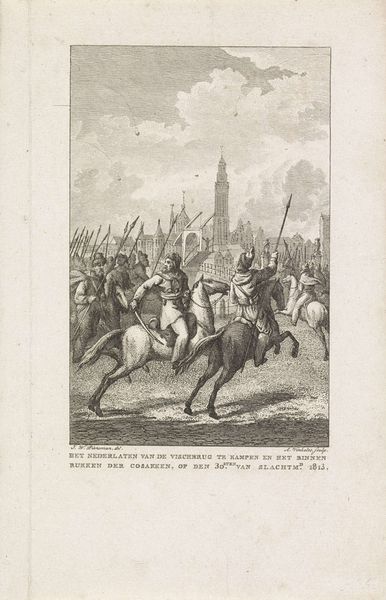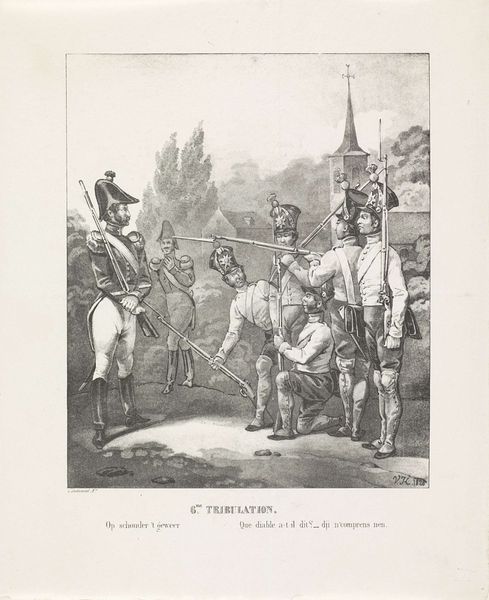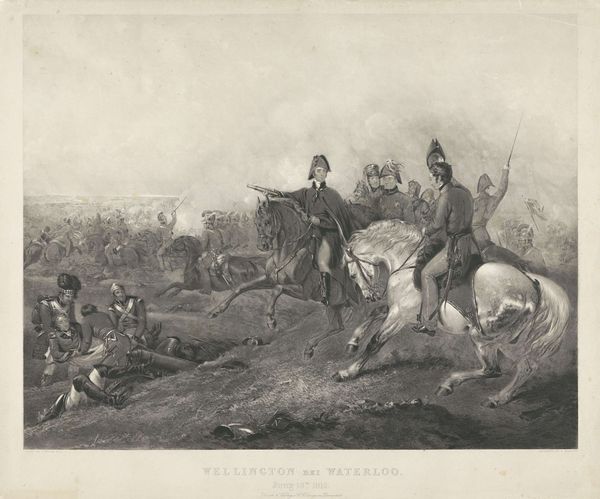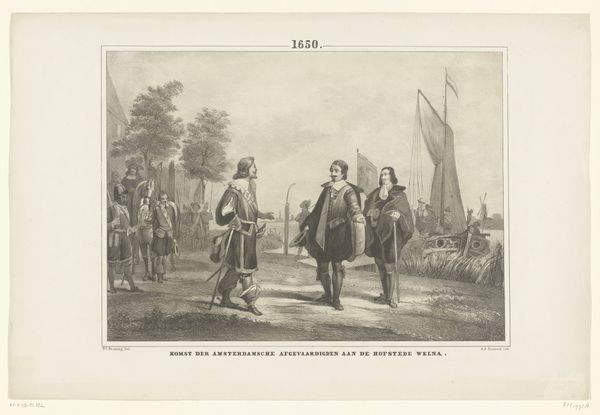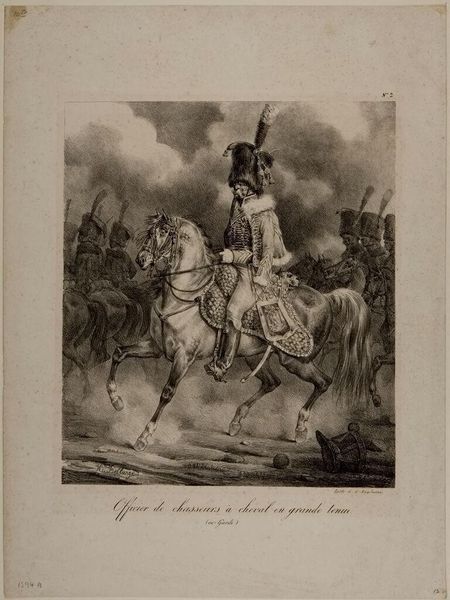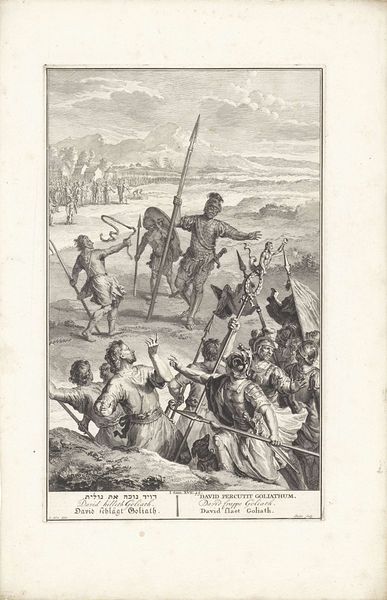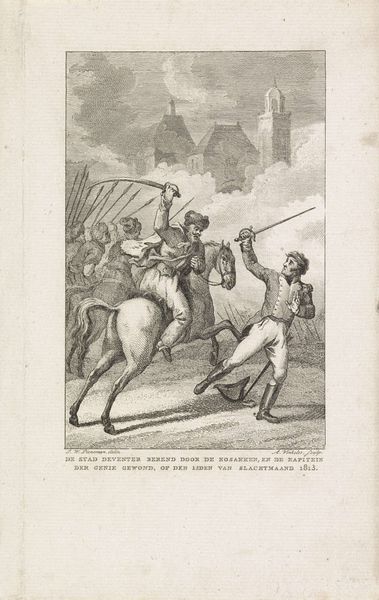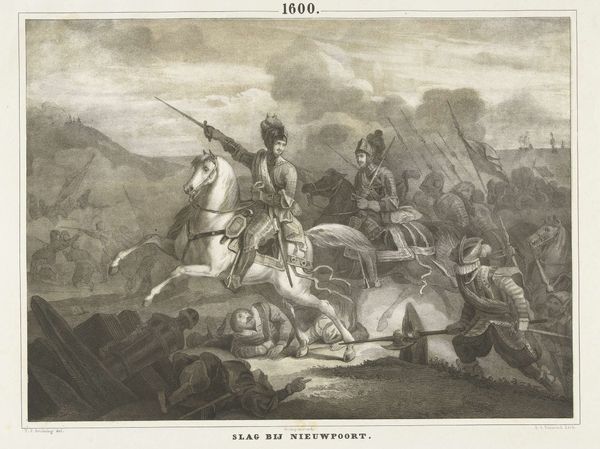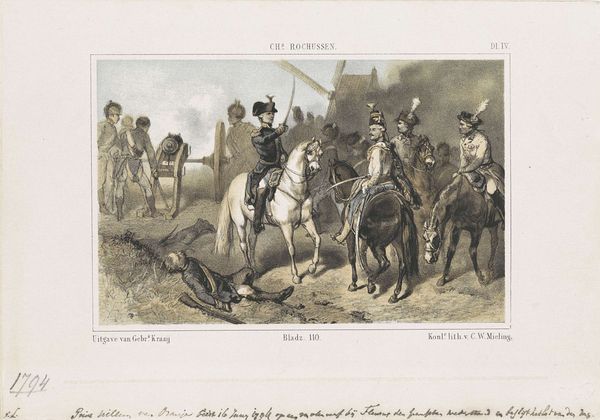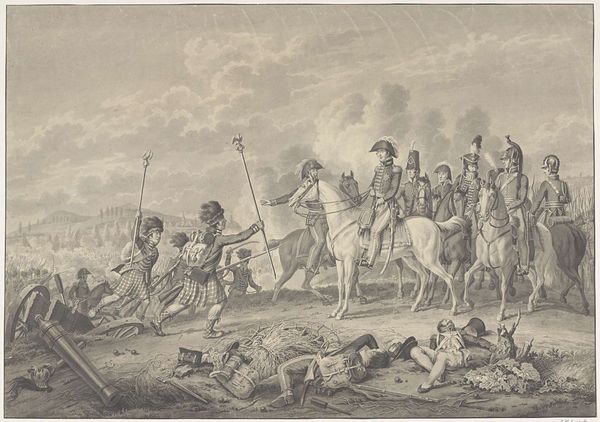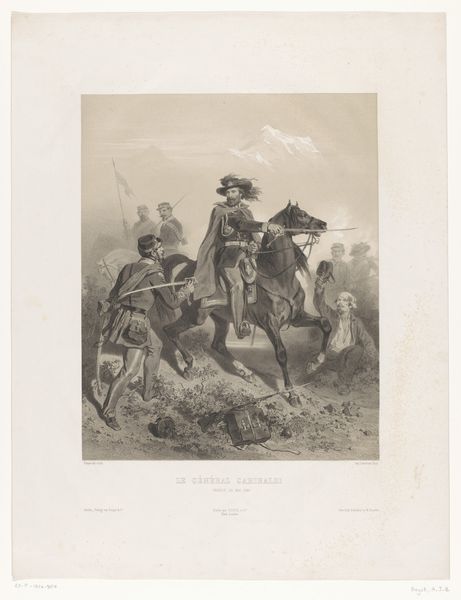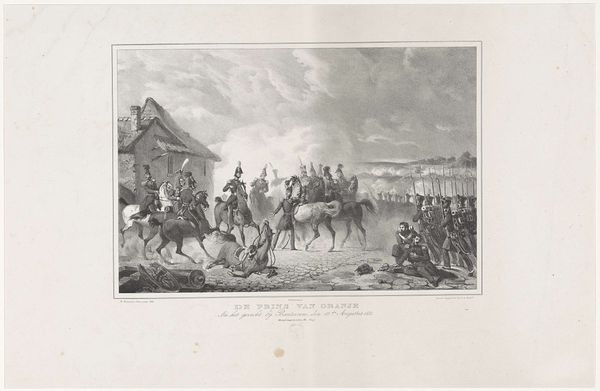
print, engraving
portrait
narrative-art
history-painting
academic-art
engraving
realism
Dimensions: height 173 mm, width 236 mm
Copyright: Rijks Museum: Open Domain
Curator: The prevailing mood here strikes me as rather... reserved, considering what it depicts. Editor: Indeed. We're looking at a print from possibly 1815 titled "Prins van Oranje deelt eretekens uit, 1815," which translates to "Prince of Orange Distributing Decorations." It seems to commemorate a specific historical moment through an academic lens. Let's delve into the visual rhetoric at play. What symbolic readings do you gather? Curator: The central figure, the Prince of Orange, is of course presented as a figure of authority, distributing medals on horseback, evoking classical equestrian statues of emperors and generals, but notice the subtle inclusion of an ongoing battle scene in the background, beyond the conferring of honor, it speaks of manufacturing consent through awards, doesn’t it? Editor: Certainly, this connects deeply to cultural memory and political symbolism, the very deliberate inclusion of the battle’s material impact. Think about it, prints were quite a mass medium in that period, and readily reproducible and consumable; its function extends beyond merely commemorating a military victory. Curator: Absolutely. And notice the engraver's process – likely working from an existing painting – is itself a form of translation and labor, changing scales of production but the act of conferral. Who engraved the work, where and how the paper would be consumed; these all point to ways materials themselves reinforced the messages contained in the print. Editor: Very good point! Also consider the placement of the drum. Those carrying the equipment literally bear the weight of history and national identity, which speaks to their endurance. The imagery underscores how valor and dutiful service, particularly of those lower in rank, buttresses and reinforces positions of power. Curator: Precisely, valor and dutiful service are always marketed this way, in every society. This historical context speaks directly to issues of class, duty, and military power inherent within processes and production of images like this one. Editor: Yes, thinking of it that way allows one to recognize how this simple scene can become such a dense encapsulation of the era's political and social dynamics. It’s a perfect lens to consider cultural values that remain visible through imagery today. Curator: A perfect insight! Thinking through those layers, the physical and historical context makes a piece that can appear somewhat plain resonate far beyond the battlefield and well beyond the print shop, wouldn't you agree?
Comments
No comments
Be the first to comment and join the conversation on the ultimate creative platform.
